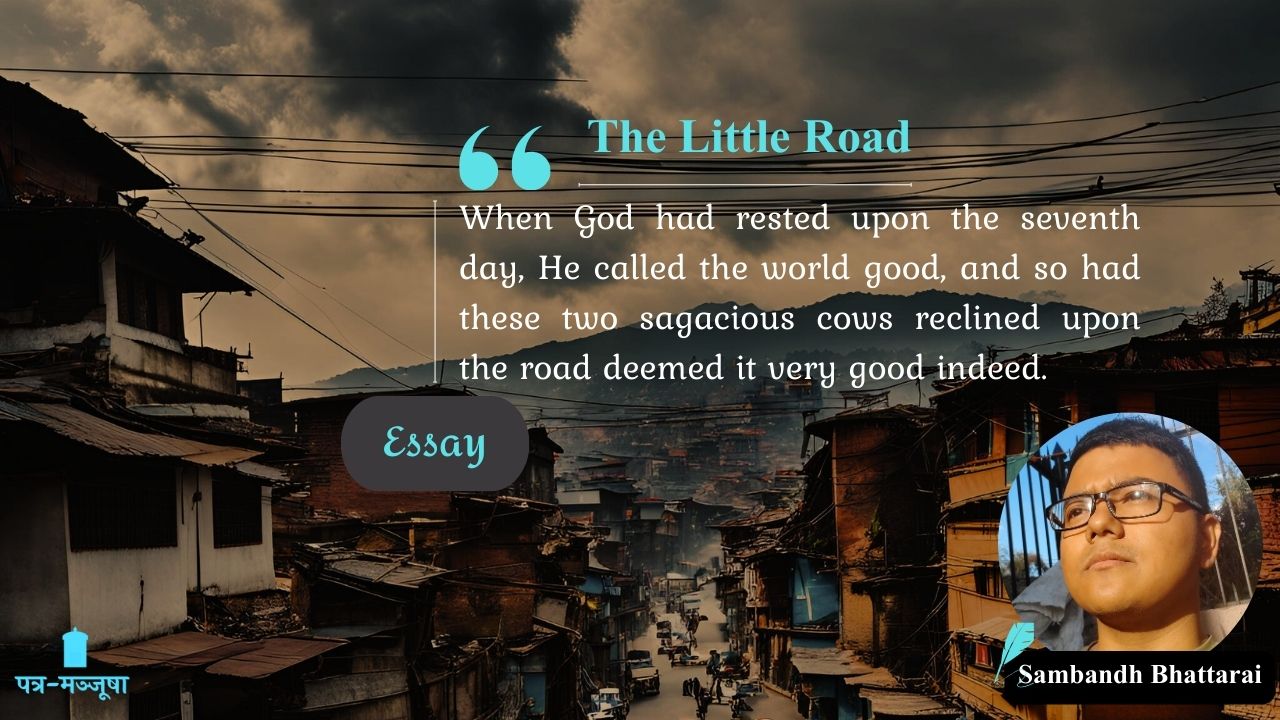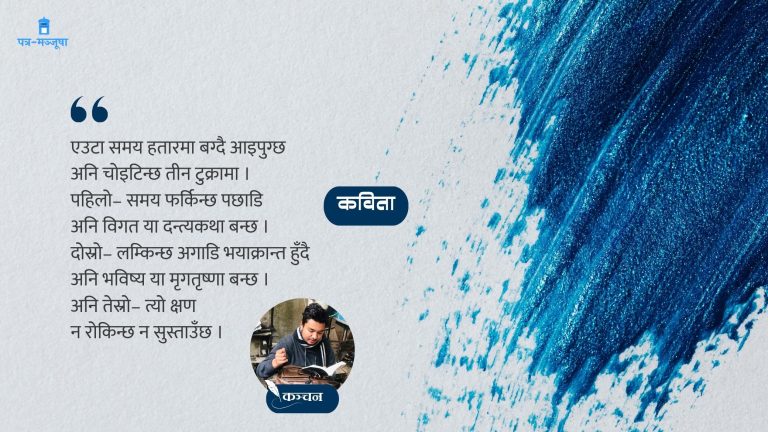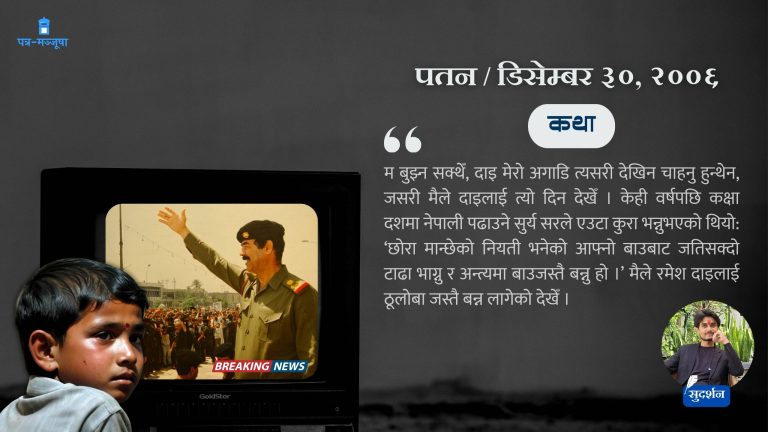If you find yourself in Kalanki, and not too depressed by the sprawling tyranny of the highway and its gangs of gas-guzzling steeds, or you went wandering there in want of exercise, or maybe even due to some fit of understandable madness, happen to amble towards the direction of Balkhu, you might be able to see a most extraordinary phenomenon below the foundation of the most ordinary Sita Petrol Pump.
Between the aforementioned highway and the petrol establishment, you will see a little new road. You would know if you had come earlier that it was nothing but a mess of rubble, and if you had come even earlier, a mere dirt path. Now, newly paved roads are not by themselves anything special, especially when it’s the beginning of the next budget month. And this one was most probably done before the budget was allocated, so it was undoubtedly the plainest road ever built, at least in the spirit of roads.
However, it was not the road itself that became it. It was instead what was done with it. Being new, the road was still not ready to be introduced to the stampede of what I propose to be the actual denizens of Kathmandu: the cars and the buses. To control this flood, an almost pitiful wooden beam was laid across the headwaters of the road, and miraculously, it had done its job.
The asphalt possessed a youthful black sheen, and the yellow tapering lines were undimmed in their brightness. If there needed any other proof of the liberty possessed by this juvenile road, then let me point out that two stoic cows reposed beside the beam—one chewed the cud meditating upon the theory of the cyclical nature of the universe, the other looked towards the petrol pump with a particularly haunting absorption. Their hooves had allowed the space, and their tails had slapped away any evil there. When God had rested upon the seventh day, He called the world good, and so had these two sagacious cows reclined upon the road deemed it very good indeed.
As I said earlier, the road had not been taken by its true residents. Instead, the secondary citizens had taken it. And the most secondary of them all too: children. There was a boy skateboarding down the slope while another smaller boy eagle-eyed watched him balance himself upon it. Another was playing ball with whom I presume to be his father, for it seems only fathers can still possess the magic of being a child again. A group of older boys walked but not in a hurry to get somewhere, but leisurely, as if anywhere they stood was where they were supposed to be.
This was the extraordinary sight I was talking about. It was extraordinary because it was so ordinary. It had that ordinariness one thinks gone into history, and yet here it was striving here in the present. It was ordinary because it was sane.
There is something so sane about a ball rolling up and down the road instead of a tire. There is something so sane about the sound of a skateboard rattling on the asphalt instead of the sound of an engine gurgling in the air. There is something most sane about children inhabiting the roads instead of vehicles.
For there is nothing more sane than a child. It is the adult who is insane. The adult smiles when he does not mean it, laughs when he does not feel any laughter in him. He makes a promise in order to break it, he tells a parable in order to doubt it. Furthermore, the adult gives his birthright to metallic monsters to tread. It is a great mystery (and mercy) that God lets this insanity continue. But our solace lies with children. They smile when they are joyful, they cry when they are sad. Their promises keep them awake at night, and their faith in parables is as true as day. They don’t squander their bright-right. They speed to it, filling every inch and corner and volume of that road with their sanity. The meek shall inherit the world. The children shall inherit the roads.
Now you might say that roads were made for vehicles to drive upon. And you are right, my friend. However, just because they were made for the cars does not mean nothing better could be found for them. Believe it or not, chainsaws were made to perform surgery. Fortunately, we have found a better purpose for them. Unfortunately, the same could not be said for roads.
But of course, that extraordinary sight won’t last long. Soon enough, the beam would no longer be able to hold back the current. The road will be inaugurated to the machines, and closed to the living, and so like elves, the children will vanish from there. But for the time being, it is still there to see. I was there the day before where I looked upon that road and those sane bearings. The sun was setting, the sky an elegiac orange. It was the twilight of the children. The skateboard was still humming, the ball still rolling. Phantom shapes danced in my vision.
Above a plane flew by, scoffing at the little road and its littleness. It proclaimed that it had the eternal skies as its birthright while the road below would be lucky to see another month. I told him that it was quite true that the road was not going to remain, but one thing the road could boast against the skies was that no cow would ever rest upon it and deem it good.






